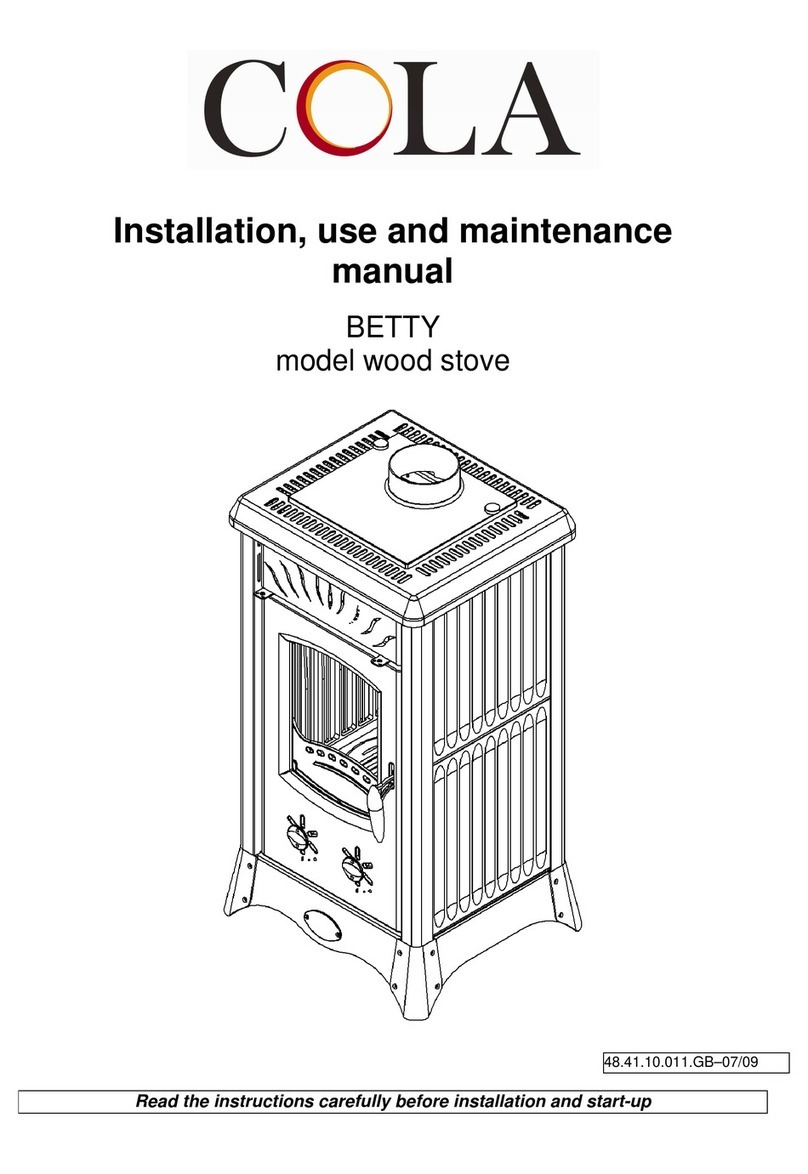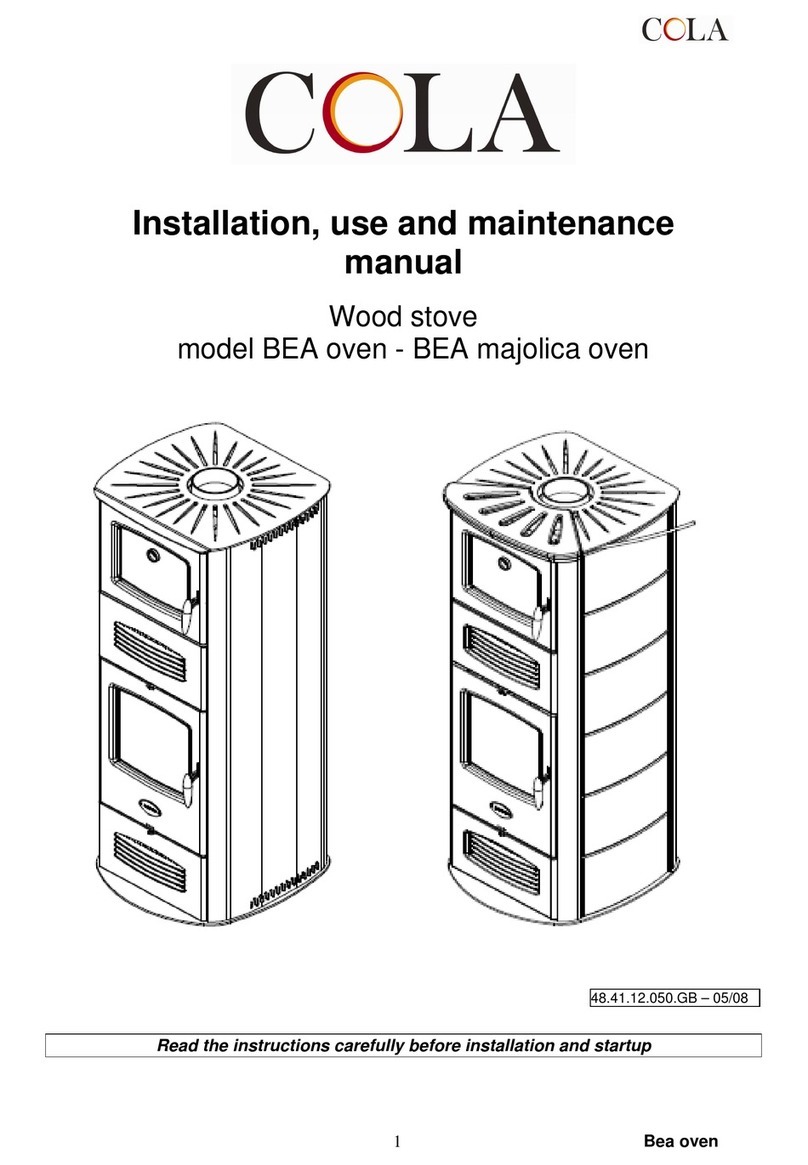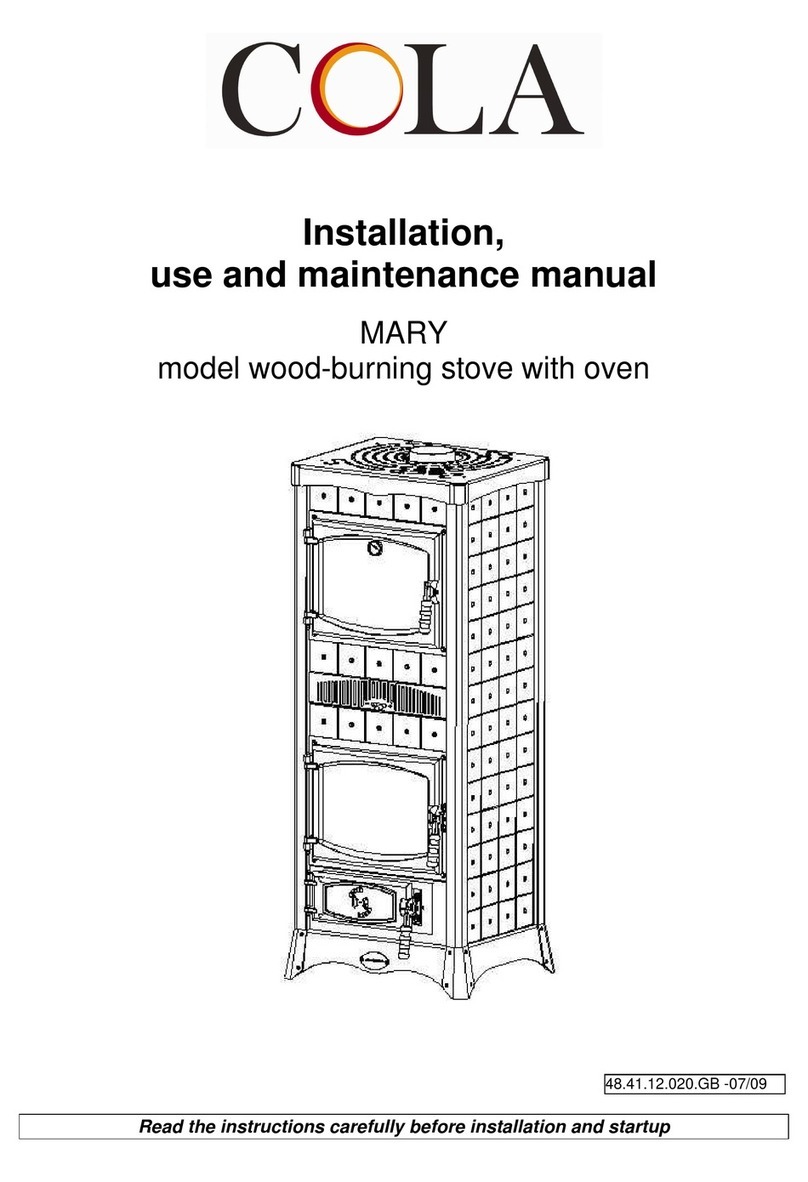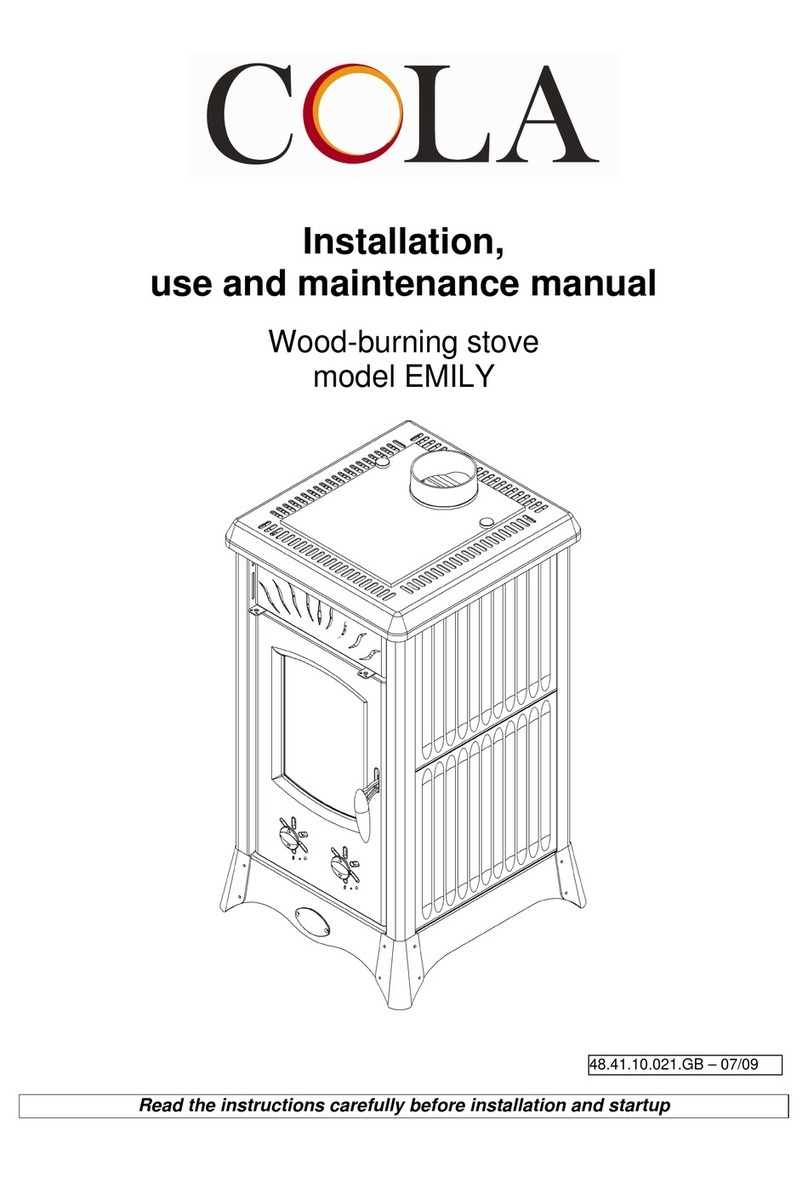
8
Ely
3.7 Food-warmer operation
The stove has a food-warmer with capacity of approx. 19.5 litres, covered entirely in stainless steel and
provided with 2 racks for holding trays.
A thermometer installed on the glass of the enamelled cast iron oven door shows the food-warmer temperature.
When the stove is lit for the first time, the food-warmer should only be used after 1-2 hours operation at 200-
250°C with the door left ajar to eliminate fumes pr oduced by manufacturing process residuals such as grease,
oil and sealants.
Clean the food-warmer after each use, following the instructions given in the section on cleaning.
The food-warmer must only be used for its intended purpose, i.e. for warming food; any other use is
improper and potentially dangerous.
3.8 Idle period
If the stove is not used for long periods it is advisable to store it in a safe and protected place.
To best preserve the stove:
- carefully clean it, and replace any damaged parts if necessary;
-cover it to protect from dust.
4 – ROUTINE STOVE CLEANING AND MAINTENANCE
Good maintenance will help improve stove operation, efficiency and service life.
Every day, before lighting the fire, make sure to clean the grate of any unburnt residuals and remove the ash
from the ash pan zone.
4.1 Removing the ash
The stove has a removable grate which should be cleared of ash, using the poker supplied, every time before
loading fuel.
Make sure to periodically empty the ash pan, since the accumulation of ash under the grate hinders the flow of
combustion air. Otherwise the grate will overheat and may become damaged.
Hot ashes must not be put in waste bins or left outdoors. To prevent the risk of fire, allow the ashes to
cool outdoors inside a metal container.
4.2 Cleaning the glass
The glass can be cleaned using a damp cloth and specific non-abrasive detergents.
Do not clean the glass during stove operation. The glass must be cleaned only when the stove is cold.
4.3 Cleaning the flue
A reduction in heat output is nearly always due to obstruction of the flue. Also, the presence of burnt gases with
odours can be a sign of an obstructed flue.
The flue of your stove must be cleaned at regular intervals. The amount of soot and the frequency of cleaning
will depend largely on the type of fuel and its use (low or high heat output).
To avoid unnecessary dust, carry out cleaning according to the following instructions:
-clean only when the stove is off;
-close all the openings that must not be cleaned;
-remove the flue pipe and clean outdoors;
-remove the deposits inside the stove with a wire brush;
- remove the food-warmer; to do this, proceed as follows:
- undo the 4 screws fixing the frame with food-warmer door to the stove,
- undo the screw supporting the back of the food-warmer,
- remove the food-warmer from the stove.
- all the residuals removed from the grate or the ash pan must be taken away;
-in any case detach the pipe from the chimney.
Carefully close the openings for cleaning and also check the closure seals. They must be replaced if damaged
when removing the cover during cleaning.
































